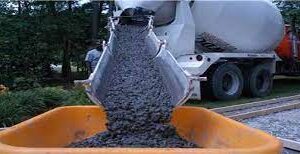
A house requires a variety of materials that must all be fastened together. Concrete, wood, metal, glass, fiberglass, and other materials all have their place and use in a structure. However, the joints where these different materials may come into contact are difficult to seal because dissimilar materials do not always form the strongest bonds. Fortunately, there is an entire category of building products designed specifically for the task: sealants.
What exactly is a sealant?
Sealants are substances that are used to seal, block, or close gaps between building materials in order to keep fluids, air, and pests out. These materials fill any irregularities that may exist between the two surfaces by sealing joints where dissimilar materials meet. Sealants can also be used to fill cracks in concrete, fiberglass, and other rigid building materials.
Sealants are usually thick liquids or pastes that can be squeezed into place with a caulking gun. Users can also use a trowel to apply sealants, or apply the liquid to the joint before assembly, allowing the sealant to naturally take the shape of the gap under pressure.
Sealants can also be used to conceal gaps around window and door trim, as well as to provide flexible adhesion between two surfaces. They can keep a home more comfortable in different types of weather because they prevent air and other substances from passing through gaps.
Where Sealant Should Be Used?
Sealants are commonly used in a wide range of applications. Window and door installers will use a sealant to caulk around the rough opening, creating an airtight seal that will make the home feel more comfortable. The joint between framing lumber and concrete foundations may also have a sealant, though these are usually foam strips.
Window glazing, patching cracks in concrete foundation walls and sidewalks, around shower and tub surrounds, and seams around moldings within the home are all applications for sealants. A sealant can be used anywhere there is a small gap that allows water, air, or insects to pass through.
Sealants are classified into six types.
There are numerous sealants available, each with advantages and disadvantages. Some sealants are ideal for a specific application, which means they may work for one but not for another. Others may be more general in nature. As a result, it’s critical to select the best sealant for the job at hand.
Sealants those are water-based
Water-based sealants, also known as latex, are widely used in the building industry to fill gaps between mouldings, doors, and windows. These sealants are simple to apply and clean up, and they dry quickly. Water-based sealants can also be painted. However, because the sealant contains so much water, water-based sealants shrink when dry, making them unsuitable for wet or exterior applications.
Sealants made of acrylic
Acrylic sealants are paintable in the same way that latex sealants are, but their sealing properties are more stable and do not shrink as much. As a result, these sealants are frequently paintable, making them useful for outdoor applications requiring colour matching, such as concrete cracks, trim around exterior windows and doors, and other easily visible and weather-exposed repairs. However, because acrylic sealants are less flexible than other sealants, movement over time can cause cracking.
Butyl adhesives
Butyl sealants are rubber-based and adhere well to a wide range of materials. They can be runny and stringy, making application difficult. However, because these sealants do not cure like other sealants, they are very flexible, have a long service life, and are resistant to UV rays, moisture, and ageing. They are highly water-resistant, but not very resistant to movement, which means they can tear. They will also not accept paint well.
Sealants made of polysulfide
While polysulfide sealants are more expensive and contain more volatile organic compounds (VOCs) than other types of sealants, they are excellent in some applications. They retain their flexibility throughout their service life and can even be used underwater, making them an excellent choice for active leaks that require immediate repair. Those repairs will also not be temporary; some polysulfide sealants have a lifespan of up to 20 years. Remember that most polysulfide sealants do not accept paint well.
Sealants made of silicone
Except for the fact that they cannot be painted, silicone sealants are an excellent all-around sealant choice. These products are extremely flexible and water-resistant. They also stick to almost any material and are less prone to shrinking than most other sealants. The main disadvantage of these sealants is their high cost, but they are among the most effective at creating water and air barriers.
Sealants made of polyurethane
A polyurethane-based sealant may be the best bet for a tough sealant that adheres to nearly everything. These sealants form strong bonds between materials and seal joints to keep fluids and other substances out. They are also more abrasion resistant and flexible than many other sealant types, making them a popular choice in the construction industry. Polyurethane sealants are rarely paintable, but they are frequently available in tinted colours such as grey, black, or white to match concrete and trim.
Last thoughts
Regardless of the application, selecting the best construction sealant for the job is critical. A water-based sealant is ideal for indoor applications that require painting due to its low cost and paint ability. Polyurethane may be the best choice for strong and flexible bonds. It depends on the situation, but there is a sealant for every situation.






